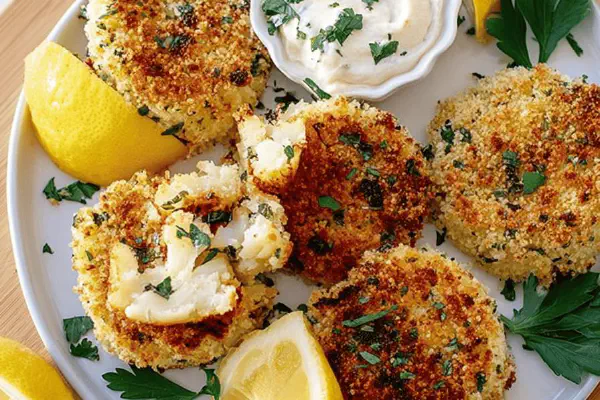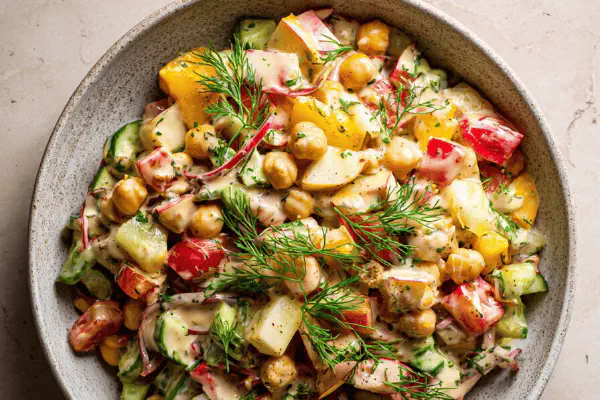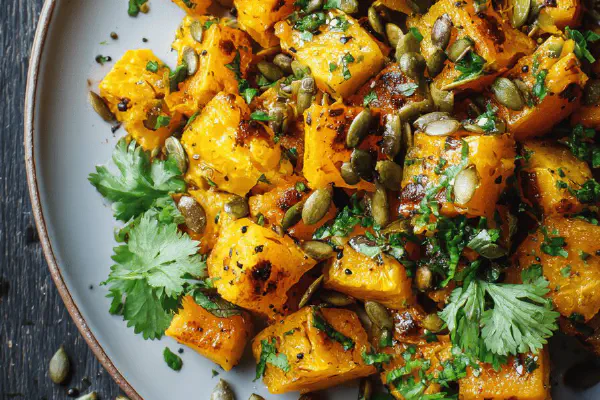Featured Recipe
Fava Chickpea Falafels

By Kate
"
Fava and chickpea falafels spiced with coriander cumin and chili powder. Soaked overnight for texture not mushy. Fried till golden crisp outside tender inside. Served with creamy tahini lemon garlic sauce, zingy and balanced. Parsley adds fresh herb notes. Swap chickpeas with lentils or black beans. Onion replaced with shallot works well. Technique tips for shaping frying and soaking included. Timing based on color and texture cues not clocks. Practical advice for oil temperature and adjustments for humidity. Sauce easily thinned or thickened to taste. Simple salad pairing boosts crunch and acidity. Gluten free vegan nut free. A reliable falafel route with twists and kitchen hacks.
"
Prep:
20 min
Cook:
45 min
Total:
65 min
Serves:
4 servings
falafel
vegan
gluten-free
Middle Eastern
Introduction
Start by soaking fava and chickpeas overnight – no shortcuts. Dry well or falafel paste soggy, won’t crisp up right. Parsley bold earthy and fresh, keeps it vibrant. Swap chili powder for smoky paprika if you want subtle warmth not heat. Pulse veggies and beans—not too fine. Texture matters here. Oil temperature critical; too hot burns outside leaves raw middle. Baking powder lightens, helps them puff instead of dense balls. Fry small batches so oil temperature stays stable. Sauce tahini lemon garlic classic but add garlic powder dry or fresh both fine. Water controls thickness pancake batter-like is good starting point. Eat immediately best, or else reheat carefully — soft falafels lose charm fast.
Ingredients
About the ingredients
Adjust legume quantities 30% based on preference for more fava or chickpea balance. Chickpeas add nuttiness, fava adds creaminess. Garlic raw taste sharpens when fine minced so pulse chunks for texture. Onion swap red or shallot if you want sweeter finish. Parsley fresh herbs key; doesn’t need substitution but basil mint can add twist. Baking powder is must for airy texture; replace with baking soda cautiously - less needed a pinch only. Spices easily swapped; cumin coriander essential, paprika over chili for milder complexity. Water addition pivotal to bind but don’t overdo or paste too wet to fry. Oil choice versatile but peanut or sunflower neutral. Tahini sauce flexible: add lemon or garlic gradually to control pungency. Salt adjusts flavor points at end.
Method
Falafels
- 1. Soak fava and chickpeas in separate bowls overnight. Drain well pressing excess water out. No standing pools when processing.
- 2. Heat oil to 175 °C (350 °F). Use a thermometer if unsure. Oil should ripple slightly but no smoke.
- 3. Pulse garlic onion parsley and soaked beans in food processor in short bursts. Texture grainy but not pureed glue. Too smooth means dense falafels.
- 4. Transfer to bowl. Stir in spices baking powder salt. Add cold water a little at a time. Mixture should clump when squeezed between fingers. Hold shape but soft enough to mold into egg size balls.
- 5. Shape falafel balls firmly. Avoid overpacking or they’ll dry out inside. If too soft add few spoons of flour or breadcrumbs.
- 6. Carefully drop 5 to 6 balls in hot oil. Cook 5 to 6 minutes. Watch color shift from pale raw to deep golden. Flip mid-fry gently. Falcon skin should be crispy crackling on tap.
- 7. Remove with slotted spoon. Drain on paper towel. Don’t overcrowd fryer or temperature dips and falafels get greasy.
- 8. Whisk tahini lemon juice water and garlic powder in bowl. Start mixing slowly adding water gradually. Seek creamy but pourable consistency. Season with salt to taste.
- 9. Serve falafels hot with sauce. Pair with rough chopped iceberg lettuce radish slices parsley tomato wedges and quick pickled turnips. Sauce drizzled generously.
- 10. Store leftover falafels airtight refrigerated up to 2 days. Reheat in oven to keep crisp.
Sauce Tahini
Technique Tips
Soaking beans softens without cooking, keeps falafel gritty not mushy. Drain and press extra water out , else oil splatters and falafel paste too wet. Food processor technique matters: use short pulses scraping sides often so you avoid overprocessing paste into glue. Mix spices balance flavors, baking powder last helps activate rising effect. Adding water trick spot: must be enough to make paste moldable not sloppy. Shaping: firm but light squeeze holds shape while frying. Overcrowding fryer traps steam and drops temperature, falafel soggy not crisp. Cook temps and times approximate use sensory cues: golden crisp outside with audible crackle when tapped means done. Sauce timing late: whisk last minute and adjust water for pouring or dipping consistency. Serve immediately with fresh salad, sauce. Leftovers reheat best in hot oven to resist sogginess. Avoid microwave unless you want mush.
Chef's Notes
- 💡 Soak beans overnight, no shortcuts. Rinse and drain. Excess water means soggy falafel. Use food processor for texture – pulse, don’t puree. Keep mixture grainy. No mush or glue.
- 💡 Oil temp crucial. Too high: burnt outside, raw inside. Too low: greasy falafel. Use thermometer. Look for ripples. Add 5-6 balls to avoid drops in temperature. Fry till deep golden.
- 💡 If falafel too soft, add flour or breadcrumbs. Shape firmly, but don’t overpack. Golden, crispy outside – that’s the cue. Turn gently mid-fry. Drain quickly on paper to avoid sogginess.
- 💡 Tahini sauce adjustable. Add water for desired thickness. Blend lemon juice and garlic. Adjust flavor at end with salt. Can tweak pungency based on preference.
- 💡 Storing falafels: airtight in fridge for 2 days max. Reheat in oven, not microwave. Keeps them crisp. Perfect as leftovers, but timing is key. Watch for softness.
Kitchen Wisdom
How to achieve crispy falafel?
Temperature's key; oil must be hot but not smoking. Shape balls right to hold texture. Cook in smaller batches.
Can I swap legumes?
Yes, lentils or black beans work too. Texture changes slightly, but flavor remains. Experiment with ratios for your liking.
Why are my falafels too dry?
Likely too much flour or cooking too long. Add water to mix before shaping. Shape lightly and avoid over-frying.
What’s good for leftovers?
Store in air-tight container, reheat in oven. Not microwave unless you want them mushy. Best fresh, but salvageable.



